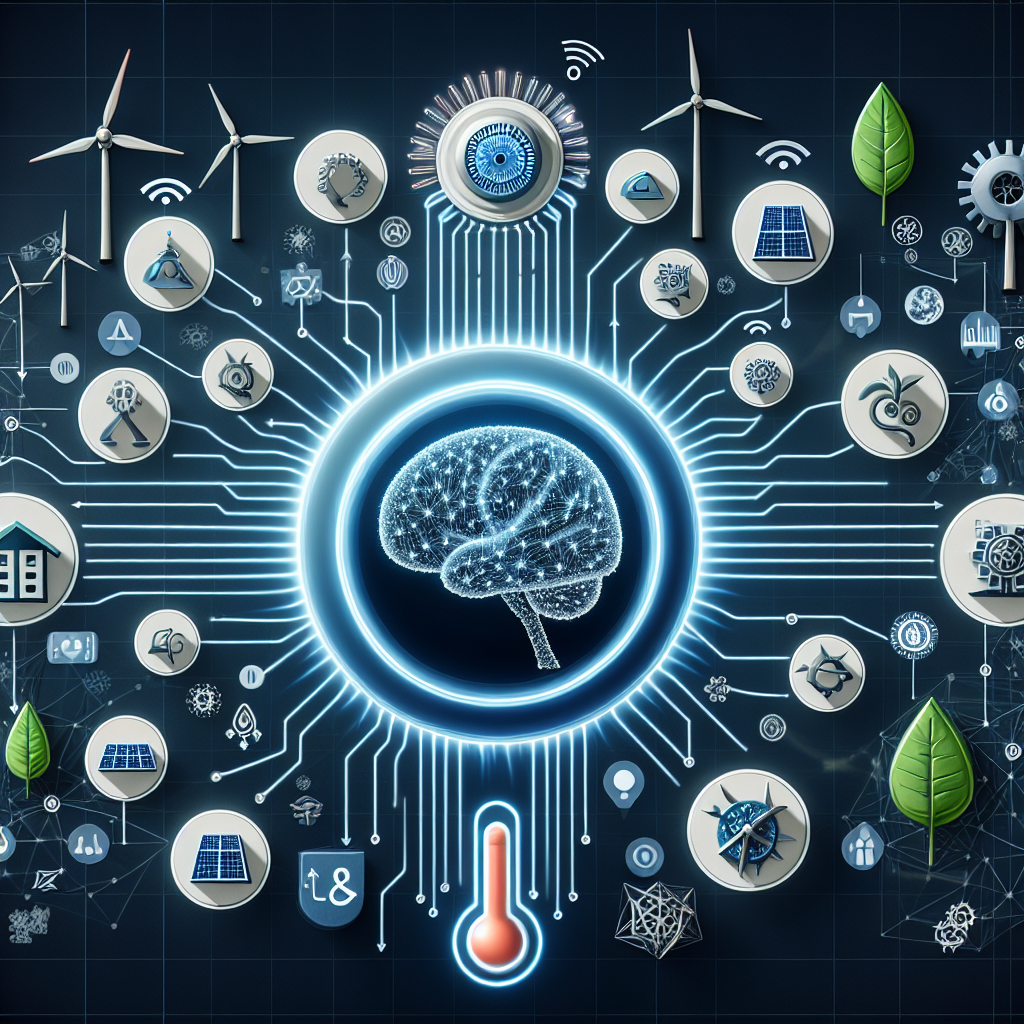AI Applications for Improving Energy Efficiency in Renewable Heating and Cooling
Introduction
Artificial Intelligence (AI) has transformed various industries, including energy management. In the context of renewable heating and cooling systems, AI plays a crucial role in optimizing energy efficiency and reducing operational costs. By harnessing the power of AI algorithms, renewable energy systems can be fine-tuned to maximize performance and minimize waste.
Renewable heating and cooling systems, such as solar thermal panels, geothermal heat pumps, and biomass boilers, are becoming increasingly popular as the world transitions towards more sustainable energy sources. However, to fully realize the potential of these systems, it is essential to leverage AI technologies for improved energy efficiency.
AI Applications for Renewable Heating and Cooling Systems
1. Predictive Maintenance
One of the key benefits of AI in renewable heating and cooling systems is predictive maintenance. By analyzing data from sensors and historical performance, AI algorithms can predict when maintenance is required before a breakdown occurs. This proactive approach helps prevent costly repairs and downtime, ensuring that the system operates at peak efficiency.
2. Energy Optimization
AI can also be used to optimize energy consumption in renewable heating and cooling systems. By analyzing real-time data on weather conditions, building occupancy, and energy demand, AI algorithms can adjust system settings to minimize energy waste. For example, AI can automatically adjust the temperature settings of a geothermal heat pump based on weather forecasts to optimize energy usage.
3. Fault Detection
AI algorithms can detect faults in renewable heating and cooling systems more quickly and accurately than traditional methods. By analyzing data from sensors and performance metrics, AI can identify potential issues before they escalate into major problems. This proactive approach helps prevent system failures and ensures that the system operates efficiently.
4. Load Forecasting
AI can also be used for load forecasting in renewable heating and cooling systems. By analyzing historical data on energy consumption and building occupancy, AI algorithms can predict future energy demand and adjust system settings accordingly. This predictive approach helps optimize energy usage and reduce operational costs.
5. Demand Response
AI can facilitate demand response in renewable heating and cooling systems by automatically adjusting energy consumption based on real-time grid conditions. By integrating AI algorithms with smart grid technologies, renewable energy systems can respond to peak demand periods and reduce strain on the grid. This dynamic approach helps improve grid stability and reliability.
FAQs
1. How can AI improve energy efficiency in renewable heating and cooling systems?
AI can improve energy efficiency in renewable heating and cooling systems by optimizing energy consumption, predicting maintenance needs, detecting faults, forecasting energy demand, and facilitating demand response. By harnessing the power of AI algorithms, renewable energy systems can operate more efficiently and cost-effectively.
2. What are the key benefits of using AI in renewable heating and cooling systems?
Some of the key benefits of using AI in renewable heating and cooling systems include improved energy efficiency, reduced operational costs, proactive maintenance, faster fault detection, optimized energy consumption, and enhanced grid stability. AI technologies can help maximize the performance of renewable energy systems and drive the transition towards a more sustainable energy future.
3. How can businesses and homeowners benefit from AI applications in renewable heating and cooling systems?
Businesses and homeowners can benefit from AI applications in renewable heating and cooling systems by reducing energy costs, increasing system reliability, minimizing downtime, and contributing to environmental sustainability. By leveraging AI technologies, businesses and homeowners can optimize their energy usage and reduce their carbon footprint.
4. What are some examples of AI applications in renewable heating and cooling systems?
Some examples of AI applications in renewable heating and cooling systems include predictive maintenance, energy optimization, fault detection, load forecasting, and demand response. These AI technologies help improve the performance and efficiency of renewable energy systems, making them more reliable and cost-effective.
5. How can companies integrate AI into their renewable heating and cooling systems?
Companies can integrate AI into their renewable heating and cooling systems by partnering with AI technology providers, investing in AI software and hardware, training their staff on AI technologies, and developing AI strategies for energy management. By embracing AI, companies can unlock new opportunities for energy efficiency and sustainability in their operations.
Conclusion
AI applications have the potential to revolutionize renewable heating and cooling systems by optimizing energy efficiency, reducing operational costs, and enhancing system performance. By leveraging the power of AI algorithms, businesses and homeowners can maximize the benefits of renewable energy sources and contribute to a more sustainable energy future. As AI technologies continue to evolve, the potential for improving energy efficiency in renewable heating and cooling systems will only continue to grow.

